- Benno Moiseiwitsch
- Ecuadorian
- Callas
- John Ritchie
- Naxos Records
- Raoul Koczalski
- Worcester Festival Choral Society
- Natalie Murray Beale
 VIDEO PODCAST: New Recordings - Find out about Adrian Williams, Andriy Lehki, African Pianism, Heinrich Schütz and Walter Arlen, and meet Stephen Sutton of Divine Art Recordings, conductor Kenneth Woods, composer Graham Williams and others.
VIDEO PODCAST: New Recordings - Find out about Adrian Williams, Andriy Lehki, African Pianism, Heinrich Schütz and Walter Arlen, and meet Stephen Sutton of Divine Art Recordings, conductor Kenneth Woods, composer Graham Williams and others.
 SPONSORED: An Outstanding Evening - Bill Newman listens to American pianist Rorianne Schrade.
SPONSORED: An Outstanding Evening - Bill Newman listens to American pianist Rorianne Schrade.
All sponsored features >>
Glorifying Finnish History

On the birthday of Jean Sibelius,
GEORGE COLERICK discusses the Finnish composer
and his music in the light of the politics of the time
After the Marseillaise, among patriotic songs Finlandia is perhaps the world's best known, having become the national anthem for at least one foreign state; but it had arrived much too late to become Finland's. It has an enviable number of fine melodies for its length of eight minutes, but because it has no space for symphonic development, it is often called 'light music'. More importantly, it achieved its original purpose, reaching the mass of Sibelius' fellow citizens. To put so many fine themes into such a small space shows an excess of creative energy which several composers have enjoyed in their youth.
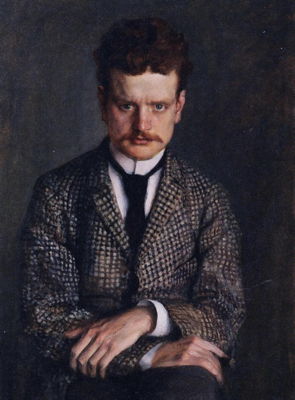
An oil-on-canvas portrait of Jean Sibelius (1865-1957) from 1892 by his brother-in-law Eero Järnefelt (1863-1937)
Patriotic music Sibelius was keen to use in the 1890s as an elusive act of defiance against the Russian government which was taking steps to increase control over what they called the 'Grand Duchy of Finland'. Finns resented Russian being imposed as the official language, and most young men did not want to be conscripted to fight for the Tsar in his wars, two of which would soon occur within a decade. Apart from this liberation phase, Sibelius would be too engrossed in his art to be politically active, as he moved away and into the more abstract world of his later symphonies.
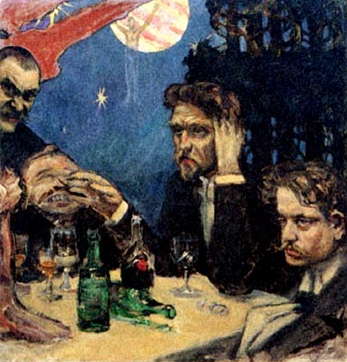
An oil-on-canvas painting of Akseli Gallen-Kallela, Oskar Merikanto, Robert Kajanus and Jean Sibelius in 1894 by Finnish painter Akseli Gallen-Kallela (1865-1931)
Musical subversion might have brought imprisonment, so the political resistance had to use cautious titles. The Finns were educationally very advanced so historical and cultural allusions were appreciated. Finlandia first appeared in 1899 as if it were just one movement in seven 'historical scenes'. His Song of the Athenians, resistance to a foreign invader in the third century BC, had an even more emotive effect when first performed.
Sibelius' first 'historical' work came in 1893 after he had initial successes with youthful compositions raising national awareness and related legends, Kullervo and En Saga. It was called Karelia, probably the largest concentration of folk-inspired melody he composed. The overture is panoramic, suggesting the battle with nature, hunting horns, a defiant, pioneering spirit, as the Finns spread westward from Lake Ladoga. Then is heard the voice of their women, forthright, hardy, in a primitive style associated with ancient runes:
Be kind, forests, soften and bend, precious Tapio, bring a man to the islet, lead him to that mound where a catch is to be made.
This solo song has a raw attraction with a full vocal power, riveting and strangely unlike operatic delivery.
Karelia had been the Eastern Finns' homeland before they inhabited the interior and frozen lakelands; but its capital, Vyborg, had suffered Lithuanian, Swedish and Russian domination in turn. One movement relates to its castle's founding in 1293, with music near to the Gregorian style touched with Sibelius' distinct harmonies; then an incident in 1446 with its ruler listening to a ballade. The city's tragic fate on being besieged by the Russians with the decline of Swedish power in 1710 starts genially in a scherzo with brass prominent, but political subjugation rapidly follows.
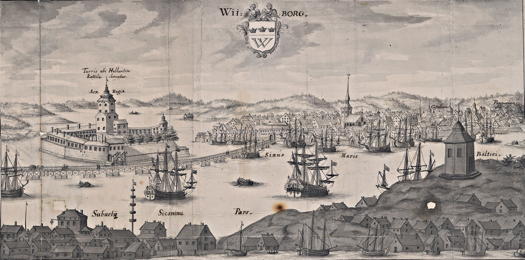
A copper engraving from 1709 of Vyborg - Viipuri in Finnish - by Dutch etcher and copper engraver Johannes van den Aveelen (1655-1727)
The 1808-9 military campaign against the Russians eventually failed, but there was some consolation that Karelia was joined to Western Finland in 1810, even though there was to be a Russian overlord. This leads to modern times, a celebration of union, ending with a rendering of the national anthem, Our Land. Composed by the German-born Frederick Pacius early in that century, its dignified beauty ensures that it will not be replaced. Its inclusion in Karelia was a compliment to the elderly Pacius, but Sibelius later said the music had no Finnish link but Italian: which was true, uninhibited in a Verdian spirit.
These movements were subsequently broken up by Sibelius because he was dissatisfied with its form as a loose set of tableaux. The overture was later published separately and he reassembled three movements to form his now very popular opus 11, the Karelia suite. Of these the march had appeared complete in the original, and the ballade had been sung, the male voice later replaced by a cor anglais. The exceptionally fine intermezzo was arranged anew from earlier sections, onward-thrusting, the conquest of nature. The original work has recently been reassembled for recording with soloists and chorus.
Sibelius had the advantage of growing up bilingual in two cultures. The Swedes had colonised Finland's south-western coastlands and he had been born of that stock. During his youth, Scandinavia was enjoying much new drama, and a powerful subject affecting lands further West came his way. It was a violent historical episode about an uprising against the Scandinavian king in 1520.
King Christian II (1898) was a successful play climaxing with a bloody outcome at Stockholm, and it served for his first purely orchestral symphonic suite. It does show a slight melodic influence from Russian composers of the time, but a distinct lyricism is heard in the suite's two serenade-like movements. The first called nocturne is a rapturous expression of the central love affair prominent in the early stages of the action before the King's consort is assassinated in an act of revenge. It has two themes of great warmth, but late on suggesting the tragedy, sustained chords of the kind soon to be recognised as typically Sibelian. The suite was praised sufficiently to reach the London Proms in 1901, though one movement had been described as 'drivel' by a Leipzig critic. This was an unsophisticated, not to say repetitive dance for the Queen, a peasant ignorant of court etiquette. The elegy has a moving Scandinavian strain familiar to many listeners through Grieg's music. Laconic references to treachery follow in the Fool's song, with an intriguing slow waltz rhythm. This has some affinity with the wistful but alluring Valse triste which a few years later would become a favourite world-wide.
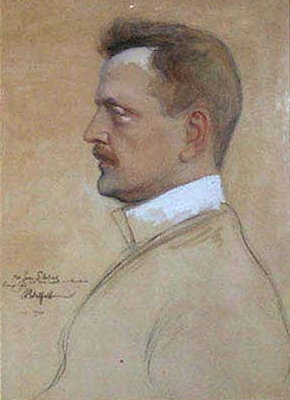
A 1904 painting of Sibelius by Finnish painter and illustrator Albert Edelfelt (1854-1905)
The slower, more reflective episodes in King Christian II show Sibelius' melodic gifts in the Romantic intensity of its late nineteenth century style. The final movements deal with the victory celebrations, skirting around the most unpleasant features of the story. Virile and precipitous, they show marked affinities with parts of Sibelius' First Symphony of one year later.
Sibelius often used the poems of Runeberg, likewise a Swedish Finn, and he set an unusual work for male chorus and orchestra, a so-called improvisation about the heroic General Sandels' success against the Russians in a Finnish battle of 1809.
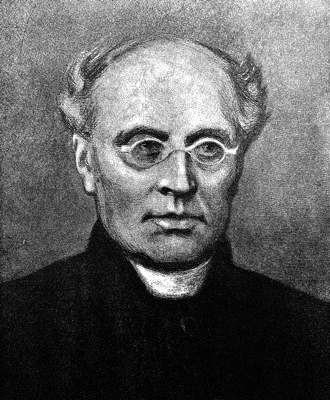
An 1893 painting of the Finnish/Swedish epic and lyric poet Johan Ludwig Runeberg (1804-1877) by Finnish painter Albert Edelfelt (1854-1905)
It is a kind of melodrama, a declamatory form popular in those confident decades. It was for orchestra with male and female chorus, at first jovial, then leading up to a battle when Sandels led his troops in what sounds like a snow-storm. Apart from the strong Finnish flavour, it has a slight parallel in the English style, such as choral arrangements by Elgar and Grainger.
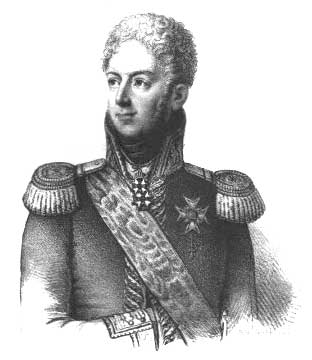
Swedish soldier and politician Count Johan August Sandels (1764-1831)
The political situation was becoming more tense with a new Russian governor restricting the freedom of newspapers. 'Pageants' were the safest way to avoid the censor, so the situation led to a 'Press Celebration', the main item being another set of tableaux glorifying Finnish history. Yet whereas the King Christian II music had been in extrovert manner, the opening tableau of the Press Celebrations Music (1899) has a mysterious, remote quality, an aspect that would become more evident in Sibelius' developing musical personality.
This is how he habitually evoked the spirit of the national epic, the Kalevala, subject of many of his greatest works. The symbolic baptism of the Finns is expressed archaically in modal keys. This is followed by revelries at Turku Castle and a sensuous bolero, justified by the ruler having had a Spanish wife. It is better known in the Historical Scenes as the Festivo.
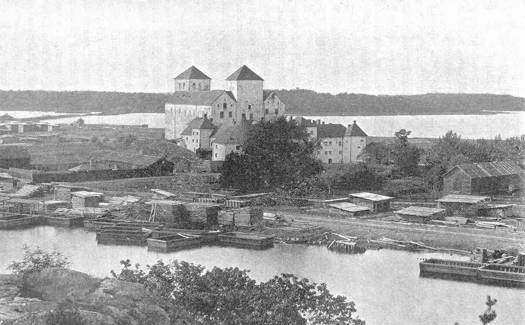
Turku Castle in about 1900
For Finland, as for Germany, the Thirty Years War had been a prolonged disaster, the sudden change in fortunes suggested when a gentle minuet is disturbed by martial fanfares and a slow march. The 1710 Vyborg siege is in sombre language, impressionistic, with tone and atmosphere replacing flowing melody. Out of this, the challenging flourish of 'Finland awakening' introduces the famed note stated ten times, the call to arms and the themes known now as Finlandia.
Much of the material was later revised into the movements of the opus 25, Historical Scenes, but such initiatives and the Finnish folk idiom were just an early phase for Sibelius. Even so, it was a further eighteen years before the Finns gained their independence, and not before a civil war. In 1905, a young Finnish patriot had assassinated the Russian governor, Bobrikov, and Sibelius considered writing a requiem, but the outcome, more discreetly, was the anonymous In Memoriam (1911). This ceremonial slow march might be the nearest he came to orchestration with a Mahlerian flavour, far more than Elgarian.
During the post-1917 civil war, Sibelius fell into the hands of the 'Reds'. Knowing that his historical and political views did not concur with theirs, they did not treat him as a national hero. Though he remained hostile to communism, he continued to interest himself in the music of the USSR, listening to Russian radio even when Finland was at war with them.
Mythology, not history, subsequently inspired his music, though the drama of humans was strong in his remaining seven diverse orchestral suites. Of these, only one is concerned with a figure of history, Belshazzar's Feast, for which he used delicately a small orchestra. Though Sibelius expert Robert Layton was less complimentary about its opening Oriental March, he admired the elusive poetry of the other three movements: Solitude, with its undulating, whispered string ostinato: Night Music, no less searching and inspired, and the final dance, an exquisite little piece of cool, fresh charm.
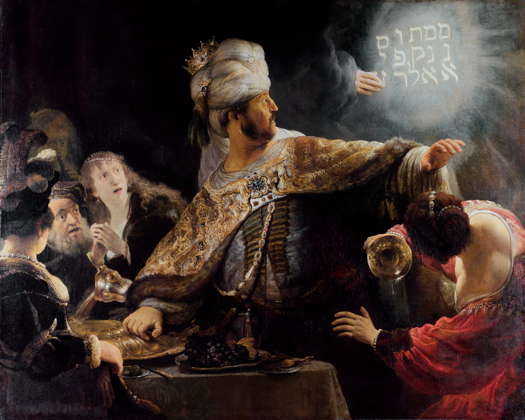
Belshazzar's Feast, oil-on-canvas, 1635, by Rembrandt
Despite its quality, it was to be Sibelius' unique impersonation of a non-European culture. His skill in creating atmosphere in this and other drama-related works brought suggestions he should write film music in later years. Yet unlike some of his famous contemporaries such as Stravinsky, he can't be imagined treading the Hollywood way.
London UK

FURTHER INFORMATION: JEAN SIBELIUS


